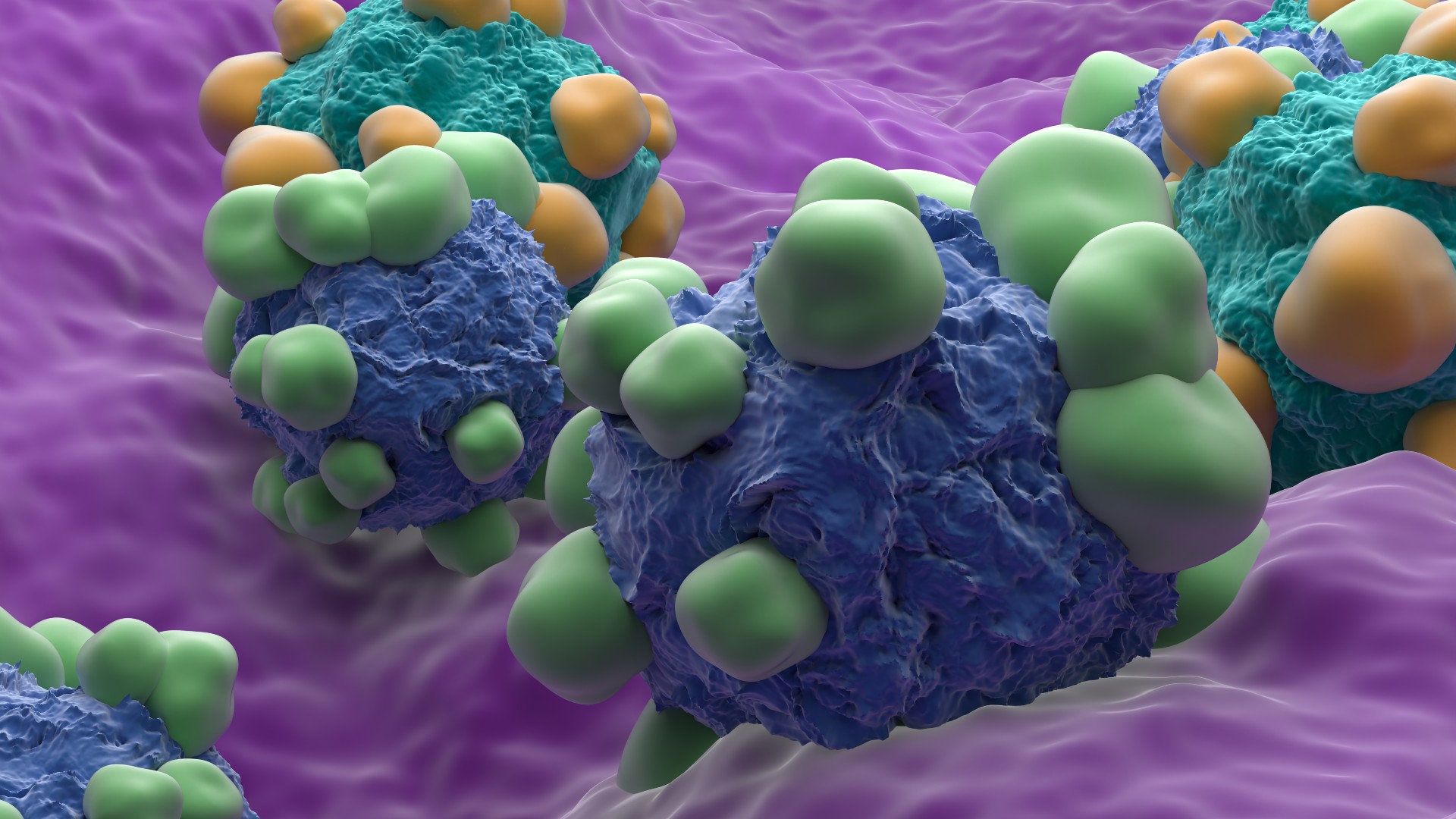Healthy tissue may predict lung cancer return better than tumors
A new study suggests that the gene activity in healthy tissue surrounding tumors could better predict whether a patient's lung cancer might return after surgery.

It may be possible to predict whether a person's lung cancer could return after surgery by zooming in on the seemingly healthy tissue near their tumors, a lab study suggests.
Lung cancer is the leading cause of cancer deaths in the U.S. One of the most common types is lung adenocarcinoma, which arises in the cells that line the air sacs of the lungs. The usual treatment for the early stages of this disease, before the cancer has spread, is surgery to remove the tumor. However, even when caught at this early stage, cancers like adenocarcinoma return 30% of the time, and so far there has been no accurate way to predict whether this will occur.
In the new study, published Wednesday (Nov. 8) in the journal Nature Communications, scientists analyzed tissue samples from 143 men and women with early-stage lung adenocarcinoma. They found that the activity of genes, specifically those involved in inflammation, in the healthy lung tissue adjacent to tumor cells was able to more accurately indicate whether a patient's cancer returned within five years of surgery than the corresponding gene expression in tumor cells.
The new research was conducted only in the lab, in isolated tissue samples. However, the researchers hope the findings could eventually be used to flag patients at high risk of relapse and ensure that they receive additional care.
Related: Millions more people need lung cancer screening, ACS says
"If you determine that the patient is at high risk, then you can do two things: monitor them more frequently, or even — but this of course requires a clinical trial — think of potential therapies in addition to surgery," co-senior study author Aristotelis Tsirigos, a cancer biologist at New York University Langone Health, told Live Science. For instance, some immunotherapies, which help the body's cells detect and attack tumors, are already being trialed in early stage lung cancer, he said.
In the laboratory study, the scientists focused on the transcriptome, meaning all the RNA molecules in the tissues they sampled. RNA shuttles instructions for how to build proteins from a cell's DNA to its protein-making factories. In addition, the team gathered information on whether a patient's disease returned after surgery to retrospectively predict their risk of recurrence using artificial intelligence.
Sign up for the Live Science daily newsletter now
Get the world’s most fascinating discoveries delivered straight to your inbox.
Overall, the authors found that analyzing RNA from healthy lung tissue accurately predicted cancer recurrence 83% of the time, compared with 63% for tumor cell RNA.
The authors also discovered that the RNA for inflammatory proteins, such as tumor necrosis factor-α (TNF-α) and interferon-gamma (IFN‐γ), were the strongest predictors of recurrence. In a separate part of the study, the authors found that the same group of inflammatory proteins were also associated with poorer outcomes for patients with other types of cancer, such as breast and kidney cancer. They deduced this using data from The Cancer Genome Atlas, a collection of cancer tissue samples collected from more than 11,000 patients in the U.S. over 12 years.
Before this research can be tested in clinical trials, further studies are needed to understand exactly what activates these inflammatory genes in healthy tissue and how this can forecast recurrence, Tsirigos said.
Tsirigos theorized that, because the inflammatory RNA signatures were seen in both immune cells and non-immune cells, perhaps immune cells were actually detecting tumor cells hidden in the seemingly healthy tissue, or maybe the inflammation they triggered destabilized otherwise healthy cells and pushed them to turn cancerous. For now, though, these are just ideas.
In the meantime, even if a specific therapy for high-risk patients is not discovered down the line, it is possible that these inflammatory signatures could still be a valuable diagnostic tool for doctors, Tsirigos said.
This article is for informational purposes only and is not meant to offer medical advice.
Ever wonder why some people build muscle more easily than others or why freckles come out in the sun? Send us your questions about how the human body works to community@livescience.com with the subject line "Health Desk Q," and you may see your question answered on the website!

Emily is a health news writer based in London, United Kingdom. She holds a bachelor's degree in biology from Durham University and a master's degree in clinical and therapeutic neuroscience from Oxford University. She has worked in science communication, medical writing and as a local news reporter while undertaking NCTJ journalism training with News Associates. In 2018, she was named one of MHP Communications' 30 journalists to watch under 30. (emily.cooke@futurenet.com)









